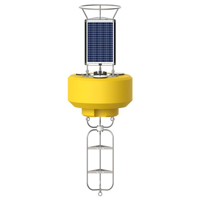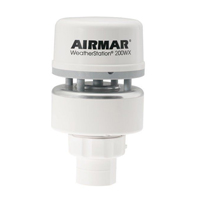 Recent studies into global climate change have identified an increase in Arctic warming rates. These are linked to increased trends toward more sea ice loss that are leading many to anticipate the Arctic will become a more popular shipping route.
Recent studies into global climate change have identified an increase in Arctic warming rates. These are linked to increased trends toward more sea ice loss that are leading many to anticipate the Arctic will become a more popular shipping route.
Coinciding with this expected expansion in use, agencies in the U.S., including the National Oceanic and Atmospheric Administration, are preparing for more operations in the Arctic. For NOAA, that means testing and developing new ways to monitor in the region’s waters.
Since the Alaskan offshore is a new locale for the observation network, researchers at NOAA are working out the kinks of monitoring there before any expensive sensors are placed in the Gulf of Alaska. They have a straightforward solution for long-term stations ready to go, and have turned their attention toward developing short-term platforms that can perform reliably in the harsh region.
At the center of these platforms, NOAA scientists are looking to use data buoys. And they have a few requirements: Each one needs to have a large instrument well, solar power and a weight of less than 300 pounds. This is to make sure that the platforms are easily deployable from small vessels.
Chesapeake Bay – a buoy testing ground
To develop the Alaska buoy systems, a NexSens CB-950 Data Buoy was purchased to serve as the base of a test platform. From there, NOAA scientists have done all of the systems integration on their own, including sourcing data logging equipment and sensors.

Sensors include bottom-mounted conductivity, temperature and depth instruments that communicate readings via an acoustic modem. These are complemented on the topside of the platform by an Airmar WX Ultrasonic WeatherStation and a Garmin 19x HVS GPS Receiver that keeps track of the buoy’s location at all times. All of the sensors report to a data logger onboard that transmits measurements to researchers via satellite telemetry.
One deployment of the Alaska buoy test platform has been completed in Chesapeake Bay. There, scientists with the agency dealt with a nor’easter storm event that knocked out the data logger just five days after launch. Going through the troubleshooting and repair process caused some headaches but taught the researchers a lot. They have since added a cellular modem that can be turned on or off through commands sent to the Iridium on-board modem. This lets researchers communicate with the buoy remotely from an office. For more-extreme situations, a WiFi module has been added to allow for interfacing with the data logger from a boat within 100 feet of the buoy.
With those improvements, scientists are embarking on a follow-up test in the St. Andrews Sound, which presents more currents than the buoy had to deal with in Chesapeake Bay.
In taking what they learn from the operation in St. Andrews Sound, some additional improvements to the system could include beefing up technology used in the underwater acoustic modem, both in deep and shallow waters. There is also a need to find a reliable two-way satellite communication option that works globally.
After the St. Andrews Sound deployment is complete and researchers have integrated what they’ve learned in improvements to the Alaska buoy system, their next target deployment site is somewhere along the Alaskan Coast.
The NexSens CB-950 Data Buoy is designed for deployment in lakes, rivers, coastal waters, harbors, estuaries and other freshwater or marine environments.
The Airmar 200XW-IPX7 is a more robust weather sensor option to meet the operational challenges of harsh open water environments.
The highly accurate GPS 19x HVS position receiver/antenna provides up to 10 Hz update rates for position, velocity and time data.



